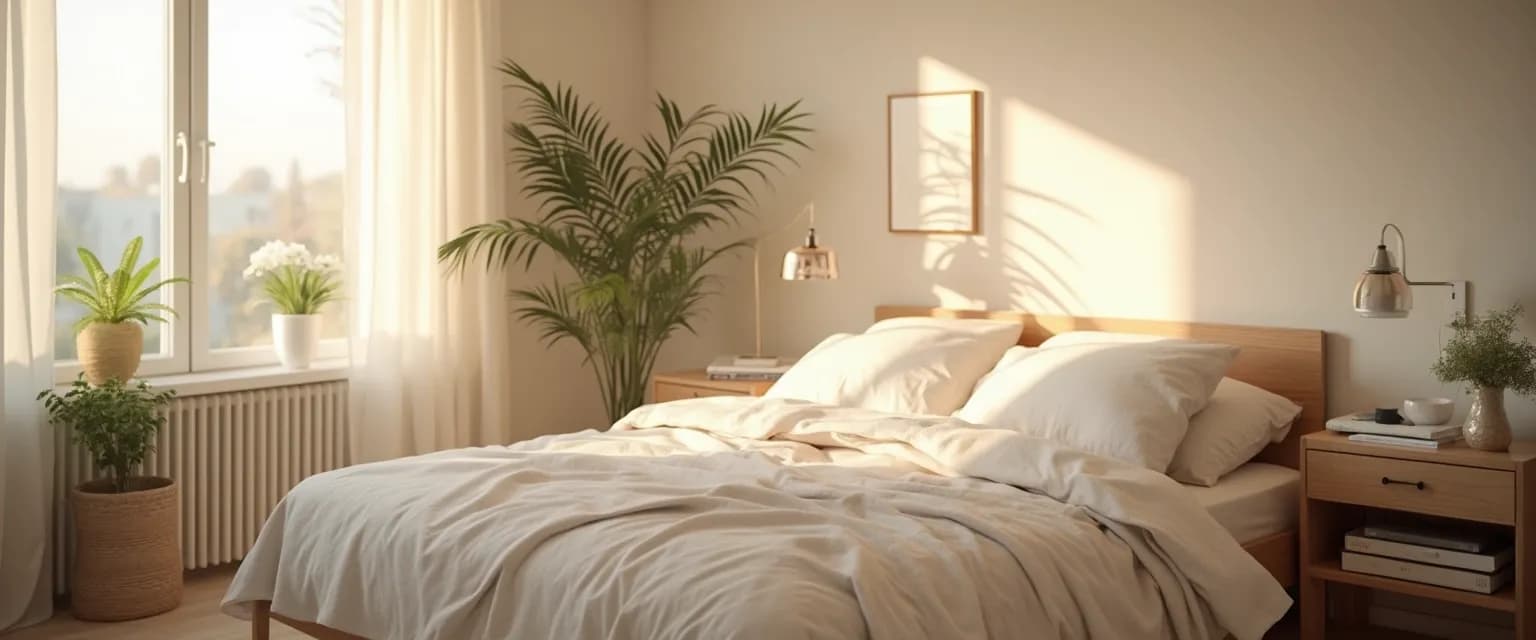Transform Your Bedroom Into a Sleep Anxiety-Free Sanctuary on a Budget
Feeling anxious when you should be sleeping is a frustrating experience that affects millions. Those racing thoughts that keep you tossing and turning might have more to do with your environment than you realize. Sleep anxiety often intensifies when your bedroom feels chaotic, overstimulating, or simply not conducive to rest. The good news? You don't need an expensive renovation or interior designer to transform your space into a sleep sanctuary that naturally calms your mind.
The connection between your bedroom environment and sleep anxiety is backed by science. Research shows that environmental factors like light exposure, temperature, and noise significantly impact your brain's ability to transition into sleep mode. Creating a dedicated sleep sanctuary addresses these factors directly, making it easier for your mind to quiet down when it's time to rest. Even small, affordable changes to your space can dramatically reduce sleep anxiety symptoms and improve sleep quality.
Let's explore how simple weekend projects and budget-friendly adjustments can transform your bedroom into a space that actively works against sleep anxiety rather than contributing to it.
Simple Light and Color Adjustments to Reduce Sleep Anxiety
Light is perhaps the most powerful environmental factor affecting sleep anxiety. Your brain interprets blue light (like what comes from phones and many LED bulbs) as a signal to stay alert, directly interfering with melatonin production. For under $20, swap your bedroom's harsh bulbs for warm-toned ones (2700-3000K color temperature) to signal your brain that it's time to wind down.
Consider adding dimmable lamps or smart bulbs that can gradually decrease in brightness as bedtime approaches. This mimics the natural sunset and helps ease your brain into sleep mode, reducing those anxious pre-sleep thoughts.
Wall color also plays a surprising role in sleep anxiety management. Blues, soft greens, and lavenders have been shown to lower heart rate and blood pressure. If painting feels overwhelming, try adding these colors through anxiety-reducing accessories instead – throw pillows, a new duvet cover, or even simple artwork can shift your room's emotional impact without breaking the bank.
A weekend project to consider: install inexpensive blackout curtains or window film that blocks both light pollution and reduces outside noise, creating a cocoon-like environment that naturally soothes sleep anxiety.
Temperature and Sound Control for Sleep Anxiety Management
Your body's core temperature naturally drops as you prepare for sleep. Research shows the ideal sleeping temperature falls between 60-67°F (15-19°C), but maintaining this range doesn't require expensive HVAC upgrades.
Simple solutions include seasonal bedding swaps (flannel sheets in winter, cooling bamboo in summer), using a programmable fan, or adding a weighted blanket which not only provides comfort but has been shown to reduce anxiety through gentle pressure. The weight activates your parasympathetic nervous system, countering the "fight or flight" response that often drives sleep anxiety.
Sound management is equally important. While complete silence works for some, many people with sleep anxiety benefit from consistent background noise that masks disruptive sounds and gives the anxious mind something neutral to focus on. Free white noise apps, affordable sound machines, or even a simple box fan provide this benefit without expensive soundproofing.
For a quick weekend fix, address any annoying sounds in your bedroom – tighten loose doorknobs, oil squeaky hinges, or use felt pads under furniture legs. These stress reduction techniques cost almost nothing but can significantly reduce nighttime disruptions that trigger sleep anxiety.
Sleep Anxiety-Reducing Bedroom Organization and Decor
Clutter creates visual noise that your brain must constantly process, contributing significantly to sleep anxiety. A Princeton University study found that a disorganized environment competes for your attention, making it harder for your mind to relax and increasing stress hormones.
Start with the surfaces you see from your bed – nightstands, dressers, and any visible shelving. Remove unnecessary items and create a "bedtime-only" zone that's visually calm. This signals to your brain that this space is dedicated to rest, not activity.
Strategic furniture placement matters too. Position your bed where you feel secure (many sleep experts recommend against having your feet directly facing the door). If possible, keep work-related items like desks and computers out of view from your bed to create mental separation between rest and productivity.
Remember, creating a sleep sanctuary isn't about expensive purchases but thoughtful adjustments. With these simple weekend projects, you can transform your bedroom into a space that actively works against sleep anxiety, helping you finally get the rest you deserve.




